- February 6, 2021
- Posted by: optimaadmin
- Category: Coaching The Handler
No Comments
In 2019 Julie wrote a blog series of the 7 keys to successful dog training. Each blog was filled with valuable information as to why each aspect is vital to succeed. We recommend all our clients read this series but realize that it’s a good idea to have a cliffs notes version for those who are short on time as they begin their training. This blog is designed to give you a couple sentences to start with and a link to each blog so you can fully understand why all 7 keys are needed to achieve maximum success.
THE KEYS
- MOTIVATION
Know why you want to do training with your dog. What are your goals? This will help keep you motivated to do the work and make the positive changes to succeed. More information. - ATTITUDE
Attitude is everything and your dog’s attitude mirrors yours! Remember to smile and enjoy your time with your dog (and watch that tail wag in delight). It’s team building at its best. More information. - PROVIDE A CONTROLLED ENVIRONMENT
This is their safe place (a den) where your dog feels comfortable and protected. It is NOT just for potty training. More information. - BUILDING COMMUNICATION
It’s a two-way experience. Know that people are more verbal and dogs are more non-verbal. In order to know what the dog is trying to say you need to observe the whole dog; tail, eyes, ears and body. More information. - CONSISTENCY
Random attempts will bring about random results. Write training on your calendar and honor it! Training is a short term training process with long term results. More information. - ACTIVITY
It’s about relaxing together, having some fun and being active together. A win win for both of you. Know that it is different for the breeds and at varied life stages. More information. - BE PATIENT
With yourself and your dog. It takes time to learn and assimilate the information into your brain so responses are consistent and feel natural. It takes about 66 days in 5 locations (not just inside your home) for your dog to learn a new skill. More information.

